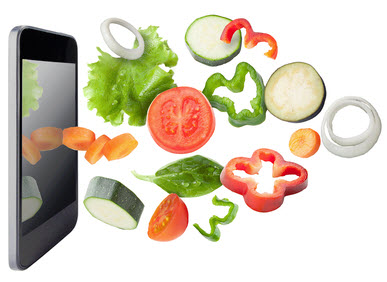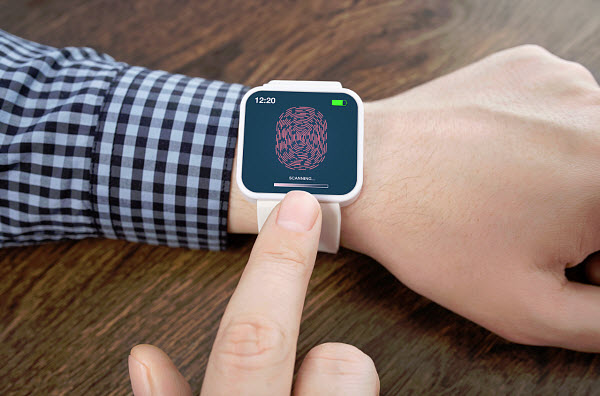An explosion of searches has revealed that people are using their devices to plan their supermarket trips.
According to search volume data that was collected during the second quarter of this year, consumers are looking to mobile technology on a rapidly increasing basis as they prepare their grocery shopping lists.
Among the searches that were performed over smartphones and tablets, recipes topped the ten leading grocery terms.
The largest sub-category search terms over mobile technology, according to the BRC-Google Online Retail Monitor were organic and natural foods. When all devices were taken into account, the searches conducted for grocery items rose by 22 percent when compared to the same quarter in 2013. The volume of searches conducted over smartphones greatly outpaced those of tablets. The data showed that there was a rate of growth of 94 percent over smartphones and 28 percent over tablets.
There was a tremendous spike in the number of searches conducted over mobile technology for organic and natural foods.
 The growth rate in this category over smartphones was a tremendous 133 percent within that quarter. Among tablet users, the increase was recorded at 21 percent. Overall, when all devices were taken into account, there was a respectable growth of 23 percent.
The growth rate in this category over smartphones was a tremendous 133 percent within that quarter. Among tablet users, the increase was recorded at 21 percent. Overall, when all devices were taken into account, there was a respectable growth of 23 percent.
It was the barbecue and grill category that brought about the largest search volume growth across all of the various devices, at 40 percent. Thirty seven percent more searches were conducted within the special and restricted diet foods category. Latin American cuisine saw a growth rate of 35 percent, while meat and poultry searches were up 34 percent and beer rose by 32 percent.
When it came to specific locations that used mobile technology the most for grocery related searches, it was London that scored the highest. Peter Fitzgerald, the retail director at Google, said that “the developments grocers have made in the region, for example the increase in delivery options becoming available.” The director general of BRC, Helen Dickinson went on to express that “In a change that will give particular cheer to grocery retailers, customers are increasingly turning to their tablet computers and smartphones for culinary guidance.”
Wearable technology is the latest thing to set the tech field alight with innovation and ambition. Many people have heard about the new devices that technology companies are planning to release in the near future, but the excitement around these devices has yet to reach a boiling point. For most, these devices are nothing more than novelties, impressive in certain aspects but lacking in others. For some, wearable devices are little more than a stepping stone to something more: A greater integration with technology itself.
Wearable devices like augmented reality glasses are designed to change the way you see the world. Other devices have a more simpler goal, either to help you keep track of your health or allow you to stay in contact with various social media outlets. Most of the things that can be accomplished through wearable technology can already be done through a smartphone or tablet. What these wearable devices are do that smartphones and tablets don’t, however, is show that people are ready to become more integrated with technology.
Wearable devices are a stepping stone toward a higher level of technology. There are already a great deal of projects underway that have to do with integrated technology and how implanted devices can change human life, but none of these products are taking into account its commercial aspects. Integrated technology is on its way to becoming a reality and not just science fiction, and commercialization is one of the last challenges this technology will have to overcome.
Wearable technology serves as a sort of unofficial proof of concept of the commercial potential of new devices. If no one wants to buy these devices, how likely are they to spend money on tech implants? The fact that wearable devices are little more than hands-free smartphones is not the issue. The real issue is whether or not people are actually willing to purchase and use these devices on a regular basis. If they do, then they may also be inclined to do the same for implanted devices that could become available during their lifetime.
The marketability of wearable devices is not necessarily indicative of the commercial potential of integrated technology, but it may serve as a sort of benchmark that can gauge consumer interest. Integrated tech is still in a state of infancy, but it will eventually become available to anyone willing and able to pay for it. Smartphones went through a very similar phase before they became massively popular, with their predecessor being old, cumbersome “brick” phones that were popular in the early 90s. These old devices highlighted the commercial potential of mobile technology and taking advantage of that potential has created a society that is heavily reliant on mobile devices today.
 The growth rate in this category over smartphones was a tremendous 133 percent within that quarter. Among tablet users, the increase was recorded at 21 percent. Overall, when all devices were taken into account, there was a respectable growth of 23 percent.
The growth rate in this category over smartphones was a tremendous 133 percent within that quarter. Among tablet users, the increase was recorded at 21 percent. Overall, when all devices were taken into account, there was a respectable growth of 23 percent.

